Beginner-ish Sportbike Shootout + Video

Honda CBR300R, Kawasaki Ninja 300 ABS, KTM RC390 and Yamaha YZF-R3 face off to determine which reigns supreme
From the title alone, there’s a good chance new riders are intently combing through each word of this shootout. The beginner bike market is one the manufacturers value dearly, and for decades Kawasaki has owned this corner of the market with its EX/ Ninja 250, and now the current Ninja 300. Honda finally followed suit in 2010, introducing the CBR250R as a 2011 model, and later, in 2014, the CBR300R as a 2015. Now the floodgates have opened, as both KTM and Yamaha have launched their own small-displacement sportbikes – the RC390 and YZF-R3, respectively – to try to grab a slice of that pie. If it weren’t for the crop of highly advanced literbikes coming out this year, a strong argument could be made for 2015 being the year of the entry-level sportbike.
Meanwhile, more experienced riders probably don’t care. Those bikes are way too slow for me. I’d get bored with them in no time. This is likely the tune they’re singing. Here’s the thing: your humble MO staff has several decades of riding under their collective belt, on everything from 50cc scooters to fire-breathing superbikes. After hopping off each of these “beginner” bikes, whether on the street or the racetrack, we couldn’t stop smiling. All are genuine hoots to ride, no matter your skill level. Beginners will appreciate the gentle learning curve each provides, while more experienced pilots will get their jollies off wringing the necks out of each of ’em. As former MO staffer, and now MO columnist, Gabe Ets-Hokin describes in his Skidmarks column, it’s simply a blast to ride a slow bike fast.
Alas, you didn’t come here to read about a four-way tie. You want to know how each bike stacks up. Are the Honda and Kawasaki, with their smaller engines, outgunned against the Yamaha and KTM? Will the Yamaha pose any threat to the Austrian RC390? Or is this all pointless because the KTM is going to rule the roost, anyway. Spoiler alert: The KTM is not our winner.
2013 Beginner Sportbike Shootout + Video
For this test, we commuted with each bike, both around town and on the freeway, and also took them for a loop around some of our favorite mountain roads. Just for kicks, since these are sportbikes after all, we ventured out to Chuckwalla Valley Raceway to join our friends at Moto Forza for one of their low-key, well-run trackdays. Joining me are my esteemed MO colleagues John Burns and Tom Roderick, as well as honorary MOron, Thai Long Ly.
It should be noted that all four bikes were fitted with the same Pirelli Diablo Rosso II tires, in stock sizes. The upgrade in rubber over the standard stuff on the Japanese bikes (the KTM already comes stock with the Pirellis) placed all four bikes on a level playing field and dramatically improved handling performance on the Honda, Kawasaki and Yamaha, inspiring confidence in the rider to lean farther and with more aggression. Had all bikes been tested with the stock rubber, the KTM’s deficits likely would have been overshadowed by the inferior tires of the others.
Another interesting topic of note: All four motorcycles were built somewhere other than their home countries as a way to keep prices as low as possible. The Honda and Kawasaki are built in Thailand, the Yamaha in Indonesia, and the KTM in India.
| So What Does It Cost? | |||
| Model | Base MSRP | Paint Options | ABS |
|---|---|---|---|
| Honda CBR300R | $4,399 | Black, Red, Pearl White/Red/Blue, Matte Black Metallic/Yellow | $4,899 |
| Kawasaki Ninja 300 | $4,999 | Lime Green, Pearl Stardust White | $5,299 |
| KTM RC390 | $5,499 | N/A | Standard |
| Yamaha YZF-R3 | $4,990 | Raven, Team Yamaha Blue/Matte Silver, Rapid Red | N/A |
As usual, we turned to our trusty MO ScoreCard to convert our subjective thoughts into a numbered score, then added those to our objective metrics like price and wet weight. And now, the results…
Honda CBR300R 77.8%
$4,399 (ABS: $4,899)
It’s too bad somebody has to finish in last place, but at least this was the one prediction the four testers made before the test that actually panned out. The Honda’s 286cc Thumper is the smallest here, and its 26.3 hp and 17.5 lb-ft. of torque simply can’t keep up with the might of the others. We all knew the Honda would have a fight on its hands, but by virtue of its smallest price tag and 356-pound wet weight, the lightest here, it warranted inclusion.
Sure enough, both on the street and track it was very easy to flick from side to side, despite a 25.0º rake, the second-laziest behind the 27.0º Kawasaki. Still, it struggled to keep pace with the others. Though to dwell on the Honda’s performance shortcomings would be doing the bike an incredible disservice. At 30.7 inches, its seat height is tied with the Yamaha’s for the lowest here. Combine that with well-tuned EFI, comfortable ergos and a clutch lever that can almost be pulled with one finger, and the CBR300R is perhaps the ideal bike to learn on. It doesn’t hurt that it glides from one gear to the next and that I believe its brakes are the best in the bunch.
“Any absolute beginner should be all over this bike,” chimes Thai. “The fact that it is comfortable, has excellent fuel economy and makes for a wonderful commuter means that combined with its [optional] ABS and low seat height, any neophyte should feel supremely confident petting such a toothless animal.”
Its soft suspension means you’ll hardly feel the crappy city streets you’ll be buzzing through on your way to class. Speaking of buzz, somehow Honda found a way to make sure you don’t feel any of them coming from the Single – even while turning 8500 rpm at 80 mph on the freeway. It’s quite remarkable and in stark contrast to the similarly-cylindered KTM. From an ergo perspective, even Chief Complainer Roderick had nice things to say. “The CBR is light and small but remains comfortable for a tester of my 5-foot 11-inch, 180-pound dimensions. Riding the CBR is more comfortable than riding the KTM.”
So if it’s cheap, economical and noob-friendly motorcycling you’re going for, the Honda CBR300R is it. Otherwise, the little CBR is a little bland. Not that that’s a bad thing, says Thai. “What’s wrong with a bike that’s as hardcore as an open air Yanni concert on a rainy night? Nothing. Yanni sells millions of albums just like Honda will sell boatloads of CBR300R’s.”
+ Highs
- Best bike for the true beginner looking for economical transportation.
- Best price.
- Highly maneuverable.
– Sighs
- Least power.
- Outgunned in this company
- Overshadowed by the others.
KTM RC390 81.8%
$5,499
Thai, like the rest of us, had high hopes for the RC390 before this test started. “This is the bike that I figured would be the king of the castle, even before inserting the key. With all the hype surrounding the little thumper my expectational cup ran full and the numbers on paper seemed to support this foregone conclusion.”
When it came time to perform, however, the hyped-up athlete delivered just a mediocre performance. Needless to say we had high expectations for the KTM, and for it to finish just slightly ahead of the Honda might seem puzzling at first, but allow us to explain.
Let’s start with the good. With 39.7 hp and 24.6 lb-ft., the 373cc Thumper is class of the field. It’s also second lightest, behind the Honda, at 364 lbs. This combination means the KTM leaves the others behind once you twist the throttle. The Single’s torque easily pulls you out of most situations on the street and feels lively when you’re accelerating through the twisties. On track, the top-end advantage means the others couldn’t keep up – at least in a straight line.
Wide, relatively low bars and a willing chassis make the RC390 very anxious to dive into turns. The RC390 sports a 23.5º rake, the sharpest here, and a 52.8-inch wheelbase, besting the Honda and Yamaha by 1.5 inches, and the Kawi by 2.5 inches. Unfortunately, despite impressive geometry figures, the RC is let down by sub-par suspension bits, especially the shock, which sits precariously close to the hot exhaust. Our resident sleuth, Sherlock Burns, theorizes the heat may compromise the shock’s oil. As he explains:
“Maybe it’s only a rear shock away from being much better, but you’ll need to replace the exhaust too because there’s not even enough room for a heat shield between the two. You can feel how hot the shock gets compared to the other bikes’. I was closing up on yous two on it at Chuckwalla at one point, when I hit that bump at the exit of Turn 1 (which I didn’t really know was there on the other bikes) and got sideways two laps in a row because of a complete lack of rebound damping and scared the pee out of myself. With 40 hp compared to 35 for the Twins and less weight, it should lap quite a bit faster. It really doesn’t.”
There’s another demerit point in the braking department, too. “Surprisingly, the KTM’s brakes were my least favorite of this group,” says Roderick. The ByBre brakes may have been designed by Brembo, but the cheaper alternative was by far the worst in the test, getting demolished on the ScoreCard. They lacked both feel and stopping power – a bad combination. Ironically, the RC is the only one of the group that comes standard with ABS.
Tom continues, “None of these bikes have top-shelf suspension, but we struggled getting the KTM to hook up at the track wearing the same tires as the other bikes.” The double whammy of bad brakes and weak suspension killed our confidence when trying to hustle the KTM around Chuckwalla. Burns wasn’t the only one sliding both ends in the corners, and while the engine gives a valiant effort, its supporting cast just isn’t up for the task.
What happens when you put her on the road, away from the track? “She works well,” says Thai. “Like a pair of Chuck Taylors. Competent and serviceable. Though I’m not sure I’m willing to make such a race-inspired commitment when there are more comfortable options available when stepping away from the track environment.”
At calmer street speeds, the KTM’s shortcomings aren’t as pronounced and are more manageable. When not flogging it through the canyons, it routinely gets over 50 mpg, our best being 56.3 mpg, but once you start playing in the high rev range, fuel goes fast. Our worst figure was 44 mpg. To make matters worse, the KTM only holds 2.6 gallons of gas, by far the least here.
KTM’s not trying to hide the RC390’s intentions as a track-focused machine. “The racy nature of the KTM is apropos as it is the only bike here with its own racing series in America,” Tom notes. As part of the RC390 Cup series, one of the few permitted modifications is fully adjustable suspension. At the Corsa Moto Classica, Tom was speaking with Jim Doyle, team owner of G-Baby Racing, an all-girl amateur team who won the 2014 CMRA 2nd F2 Endurance Championship, who was in attendance racing the KTM RC390. They too struggled with rear grip and suspension problems, finding a solution by installing a JRi shock that they report has greatly increased rear suspension performance. According to Doyle, the JRi shock is a much smaller diameter than the stock shock, which gives it a bit of extra breathing/cooling room next to the exhaust. It also has a remote reservoir, which would further cool the shock and its oil.
Alas, this is a street test primarily, and as such, the KTM is a hard sell. It costs the most of the four, isn’t as comfy for the long haul, and puts out considerable vibes at freeway speeds compared to the others. But if your goal is to simply play at the track or the canyons, this is the one to get. With a sorted suspension and a toothier set of brake pads, the RC390 would be transformed.
+ Highs
- Most power and torque is fun to play with.
- Agile chassis likes to flick.
- Standard ABS
– Sighs
- Cheap shock a real setback.
- Brakes need some help.
- Vibey on the freeway.
Yamaha YZF-R3 84.0%
$4,990
Yamaha might have waited a while to enter the beginner bike market in the U.S., but now that we’ve ridden the R3 we can say it was well worth the wait. Getting acclimated to the little Yamaha took no time at all.
Second only in displacement to the KTM, the Yamaha’s 321cc Twin pumps out 35 hp, virtually equal to the smaller Kawasaki. Torque is also marginally higher than the Kawi’s, 18.9 lb-ft. vs. 17.6 lb-ft., however the R3 carries more than 10 lbs less weight (370 lbs vs. the Ninja’s 381 lbs) and has a broader spread of torque throughout the rev range, leaving Tom to conclude, “The R3’s engine is torquier than the Kawasaki’s, making around-town operation easier.”
Despite the apparent advantage the R3 engine has on the street over the Kawi, on track it was hardly noticeable. The Yamaha fades as the revs climb, whereas the inverse is true for the Ninja. “The larger engine and additional power of the Yamaha gives the R3 a minor power advantage, but not enough for me to get past Troy [on the Ninja] down the front straight at Chuckwalla,” Tom noted. “The R3 would inch closer, but to get past him would have taken a straightaway with twice the distance.”
It’s a game of splitting hairs in the handling department, as three of the four testers judged the R3 and Ninja dead even. Burns was the only defector, rating the R3 considerably lower, due to suspension that felt soft and under-damped and didn’t jibe with him. Overall though, for having beginner-bike suspension pieces, the R3 is well damped for track duty while still providing a comfortable ride on the freeway and riding over neglected downtown roads.
Ergonomically, our testers were torn between the Kawi and Yamaha. The R3 provides a position ever-so-slightly less committed than the Ninja, which was preferred by both myself and Thai, with a seat that offers more support. At nearly 6-feet, Tom says, “The Ninja has the best seating position, ergonomics and legroom, but the Yamaha comes in a close second. The R3 also has better seat material that’s supportive as well as comforting.”
Brakes are average, but more than good enough for the job. Unfortunately ABS isn’t available, not even as an option, and is a blemish for the R3, especially considering it’s optional on the Kawi and Honda and standard for the KTM. ABS aside, the R3 rated high amongst us. It’s gauge cluster looks the most modern, is easily readable, and even comes with a gear-position indicator. The KTM has one, too, but it’s harder to read. Even after a day of flogging in the canyons, we still managed 52 mpg from the R3. An average of 56 mpg was more common under normal riding.
In the end, the Yamaha and Kawasaki are separated by one percentage point on the ScoreCard. Personally, the Yamaha came out on top in my scoring, but the other three disagree. And even though Tom scored the Ninja slightly higher, it’s not the bike he’d put in his garage.
With a score this tight, it all comes down to looks. Says Tom, “Not that I dislike the Ninja’s styling, but I’m more attracted to the looks of the R3. Being that most areas of comparison between the R3 and Ninja are so close, I’d probably buy the Yamaha because of this.”
Alas, the Yamaha is a very close second favorite in this test. Why second? “Because, Ninja,” quips Thai.
+ Highs
- Great engine for the street.
- Comfortable around town or at the track.
- Not a bike you’ll grow out of quickly.
– Sighs
- Mediocre brakes
- No ABS
- Engine barely more powerful than older, smaller Ninja.
Kawasaki Ninja 300 85.0%
$4,999 (ABS: $5,299)
Being the oldest bike here, we just assumed the others (save the Honda) would outgun it by virtue of having all this time to study what Kawasaki was doing and making something better. But, by the faintest of exhaust fumes Kawasaki has managed to hold onto the beginner- bike crown. If only just. The formula for the OG, Kawasaki Ninja 300, to come out on top in this test is quite simple, at least according to Thai.
“How does old beat new? Can Rossi really take Marquez? Can Tom Brady outgun Russell Wilson? How does Gandhi dominate Justin Bieber? By simply being better. Then and now.”
The Kawasaki, at 381 lbs, is the heaviest, but nobody complained about the bike’s girth in relation to the others, both on track and on the street. It’s impressive that, with only 296cc, the Ninjette puts out almost identical power figures to the Yamaha. However, “You really have to keep the Ninja’s parallel-Twin on the boil to get maximum performance,” says Tom. “On the track it’s a blast to ride, on the street the Yamaha’s Twin is torquier and more user-friendly.”
Still, this didn’t deter our testers from singing the Kawasaki’s praises. The Ninja won eight categories on the ScoreCard, though admittedly with narrow margins over the Yamaha. Everyone loved how easy it was to ride, and ride quickly; its chassis and suspension more composed than any of us were expecting. The Ninjette punched above its weight, able to stick with the Yamaha on track while keeping the KTM honest.
On the roads, the same lovable characteristics we liked on track carried over. The suspension is geared toward the soft side, but not overly so. The relative lack of torque means you need to rev it to really get a move on, but the gears click from one to the next easily. Better still, says Tom, “The Kawasaki is the only one that comes with a slipper clutch, a truly cool technology – especially for a 300 – that even the racier KTM does not offer.” We got a worst mpg rating of 54.3, with 60 being more common during average riding.
Ultimately, the Ninja 300 just works so damn well. Well enough to win our 2015 Entry-level Sportbike Shootout.
“I’d forgotten how good the Ninja is since the last time I rode one when it was new,” Burns notes. “For being a ‘beginner bike’, it’s one of the best-polished, most dialed-in production bikes I’ve ridden. Nothing about it stands out, including its 35 hp, but all its systems seem perfectly integrated and balanced. Fuelling is excellent, both on and when you roll off the throttle. It’s smooth enough and its suspension is so nicely damped you can feel the weight transfer back and forth from front tire to rear in Chuckwalla’s corners, which lets you ride right on the edge of the tires, and its steering is the most accurate as a result of everything else. At first, the potty chair ergos feel like they’re not going to work at all on the track, but you adjust and within a lap it’s excellent with the grips right next to your ears. Big fun till some twat roars past on a Ducati, and then it’s still fun as you close back up on them mid-corner…”
+ Highs
- Punches well above its weight.
- Only one with slipper clutch.
- Comfy ergos, even for taller folks.
– Sighs
- A little more torque wouldn’t hurt.
- Heaviest
- A little help here…
Beginner-ish Sportbike Shootout Scorecard | ||||
| Category | Honda CBR300R | Kawasaki Ninja 300 | KTM RC390 | Yamaha YZF-R3 |
|---|---|---|---|---|
| Price | 100% | 83.0% | 80.0% | 88.2% |
| Weight | 100% | 93.5% | 97.9% | 96.3% |
| lb/hp | 67.7% | 83.6% | 100% | 87.6% |
| lb/lb-ft | 72.6% | 68.2% | 100% | 75.5% |
| Engine | 68.8% | 90.6% | 88.1% | 88.1% |
| Transmission/Clutch | 79.4% | 90.0% | 84.4% | 83.8% |
| Handling | 80.0% | 91.3% | 77.5% | 88.1% |
| Brakes | 82.5% | 88.8% | 72.5% | 83.8% |
| Suspension | 78.8% | 83.1% | 61.3% | 80.0% |
| Technologies | 62.5% | 73.8% | 81.3% | 62.5% |
| Instruments | 77.5% | 80.0% | 76.3% | 82.5% |
| Ergonomics/Comfort | 83.8% | 87.5% | 75.0% | 85.6% |
| Quality, Fit & Finish | 80.0% | 82.5% | 77.5% | 81.3% |
| Cool Factor | 71.3% | 78.8% | 87.5% | 84.4% |
| Grin Factor | 65.0% | 86.3% | 80.0% | 86.3% |
| Overall Score | 77.8% | 85.0% | 81.8% | 84.0% |
Beginner-ish Sportbike spec chart | ||||
| Honda CBR300R | Kawasaki Ninja 300 ABS | KTM RC390 | Yamaha R3 | |
|---|---|---|---|---|
| MSRP | $4,399 (ABS: $4,899) | $4,999 (ABS: $5,299) | $5,499 | $4,990 |
| Type | 286cc liquid-cooled four-stroke Single | 296cc liquid-cooled four-stroke parallel-Twin | 373cc liquid-cooled four-stroke Single, forged piston | 321cc liquid-cooled four stroke parallel-Twin |
| Bore x Stroke | 76.0mm x 63.0mm | 62.0mm x 49.0mm | 89.0mm x 6.00mm | 68.0mm x 44.1mm |
| Fuel System | EFI, 38mm throttle body | EFI, dual 32mm throttle bodies | EFI | EFI |
| Ignition | Computer-controlled digital transistorized with electronic advance | Electronic | Digital | Transistor Controlled Ignition |
| Valve Train | DOHC; 4 valves per cylinder | DOHC, 4 valves per cylinder | DOHC; 4 valves per cylinder | DOHC, 4 valves per cylinder |
| Horsepower | 26.3 @8400 rpm | 34.6 @ 10,800 rpm | 39.7 @ 8900 rpm | 35.3 @ 10,800 rpm |
| Torque (claimed) | 17.5 lb-ft @ 6700 rpm | 17.6 lb-ft @ 9,700 rpm | 24.6 @ 7100 rpm | 18.9 lb-ft @9,200 rpm |
| Transmission | 6-speed | 6-speed with positive neutral finder, slipper clutch | 6-speed, stacked transmission shafts | 6-speed |
| Front Suspension | 37mm fork; 4.65 in. travel | 37mm fork, 4.7 in. travel, no adjustments | 43mm WP inverted fork, 4.9 in. travel, no adjustments | 41mm KYB fork, 5.1 in. travel, no adjustments |
| Rear Suspension | Single shock, 5-position preload adjustable, 4.07 in. travel | Single shock, 5-way adjustable preload, 5.2 in. travel | Single WP shock, spring preload adjustable, 5.9 in. travel | KYB single shock, preload adjustable, 4.9 in. travel |
| Front Brake | Single 296mm disc (ABS optional) | Single 290mm petal-type disc, twin-piston caliper (ABS optional) | Single 300mm disc, ByBre radial-mount four-piston caliper, switchable ABS standard | Single 298mm disc, twin-piston caliper |
| Rear Brake | Single 220mm disc (ABS optional) | Single 220mm petal-type disc, twin-piston caliper (ABS optional) | Single 230mm disc, ByBre single-piston caliper, switchable ABS standard | Single 220mm disc, single-piston caliper |
| Front Tire | 110/70-17 | 110/70-17 | 110/70-17 | 110/70-17 |
| Rear Tire | 140/70-17 | 140/70-17 | 150/60-17 | 140/70-17 |
| Wheelbase | 54.3 in. | 55.3 in. | 52.8 in. | 54.3 in. |
| Rake | 25.3º | 27.0º | 23.5º | 25.0º |
| Trail | 3.9 in. | 3.7 in. | 3.5 in. | 3.7 in. |
| Seat Height | 30.7 in. | 30.9 in. | 32.3 in. | 30.7 in. |
| Curb Weight | 356.5 lbs. | 381.4 lbs. | 364.3 lbs. | 370.3 lbs. |
| Fuel Capacity | 3.4 gal. | 4.5 gal. | 2.6 gal. | 3.7 gal. |
| Tested Fuel Economy | 63.6 mpg | 54.3 mpg | 56.3 mpg | 55.1 mpg |
| Available Colors | Black, Red, Pearl White/Red/Blue, Matte Black Metallic/Yellow | Lime Green, Pearl Stardust White | NA | Raven, Team Yamaha Blue/Matte Silver, Rapid Red |
| Warranty | NA | One-year, limited warranty | NA | One-year, limited warranty |

Troy's been riding motorcycles and writing about them since 2006, getting his start at Rider Magazine. From there, he moved to Sport Rider Magazine before finally landing at Motorcycle.com in 2011. A lifelong gearhead who didn't fully immerse himself in motorcycles until his teenage years, Troy's interests have always been in technology, performance, and going fast. Naturally, racing was the perfect avenue to combine all three. Troy has been racing nearly as long as he's been riding and has competed at the AMA national level. He's also won multiple club races throughout the country, culminating in a Utah Sport Bike Association championship in 2011. He has been invited as a guest instructor for the Yamaha Champions Riding School, and when he's not out riding, he's either wrenching on bikes or watching MotoGP.
More by Troy Siahaan





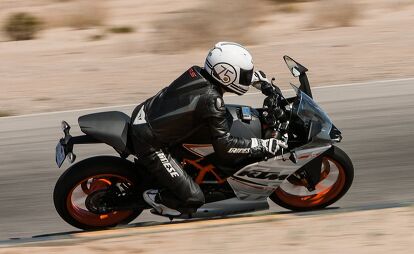

































































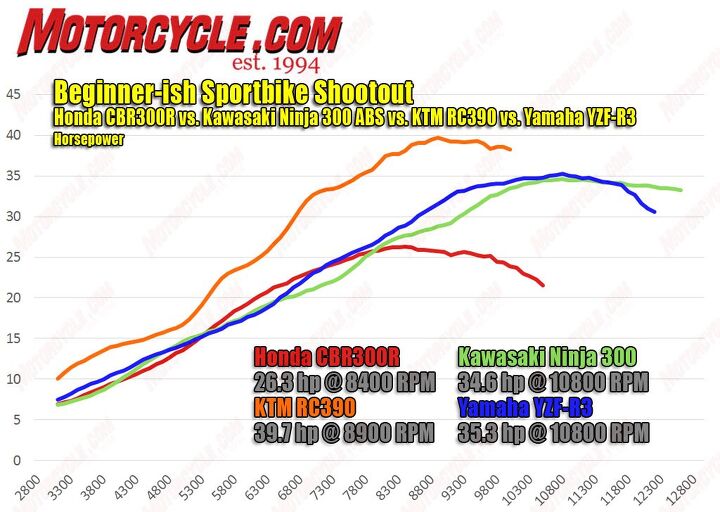


























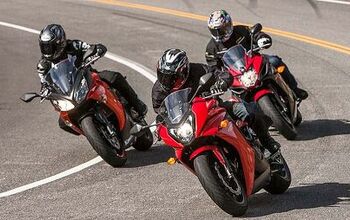
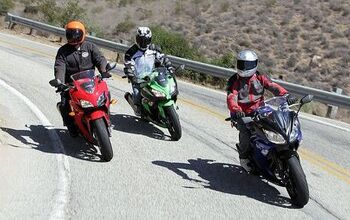












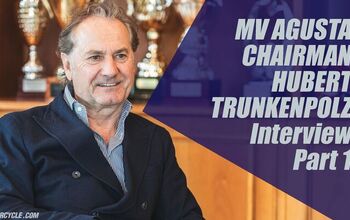
Comments
Join the conversation
I currently have a Ninja 300 for commuting and was all but at the dealership to check out the R3 when I heard it was first coming out, then I realized I couldn't even pay them more to get ABS. On a commuter I really don't want to chance not having ABS, especially when it's wet, so I stayed home instead of riding to the Yamaha dealer and am still loving my little Ninja on the way to and from work.
Yamaha R-25 got higher top speed and higher rev then R-3 (about 13500rpm). Even it is only 250cc it could reach 194 km/h at stock.